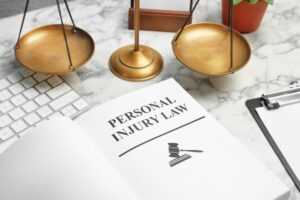 In the recent case of Kupsta-Badurina v. Blue Mountain Resort, the plaintiff, Elizabeth Kupsta-Badurina, suffered significant injuries after being struck by a snowboarder on a double black-diamond trail. Despite the severity of her injuries, her lawsuit was unsuccessful. An analysis of the case reveals several critical areas where the legal strategy may have fallen short, offering valuable lessons for Pennsylvania ski accident injury lawyers handling similar skiing or snowboarding injury claims, or potential plaintiffs wondering if their claim is viable.
In the recent case of Kupsta-Badurina v. Blue Mountain Resort, the plaintiff, Elizabeth Kupsta-Badurina, suffered significant injuries after being struck by a snowboarder on a double black-diamond trail. Despite the severity of her injuries, her lawsuit was unsuccessful. An analysis of the case reveals several critical areas where the legal strategy may have fallen short, offering valuable lessons for Pennsylvania ski accident injury lawyers handling similar skiing or snowboarding injury claims, or potential plaintiffs wondering if their claim is viable.
The court emphasized that collisions between skiers and snowboarders are considered inherent risks of skiing, as recognized by the Pennsylvania Skiers’ Responsibility Act. The Act states that each skier “expressly assumes the risk of and legal responsibility for any injury to person or property which results from participation in the sport of skiing.” This includes injuries caused by:
The Act emphasizes that skiers are solely responsible for knowing their own ability levels and must:
Furthermore, the Act specifies that responsibility for collisions lies solely with the individuals involved, not the ski area operator.
Given these provisions, the assumption of risk doctrine presents a significant challenge for plaintiffs in skiing injury cases. The plaintiff’s argument that inadequate signage contributed to the accident was undermined by a lack of evidence demonstrating that the merger point was not a known or expected feature of the trail. To succeed, attorneys must demonstrate that the injury resulted from risks beyond those inherent in the sport or from the ski area operator’s negligence that increased the risk of harm. This requires thorough investigation and compelling evidence to establish liability. Pennsylvania ski accident injury lawyers must present evidence showing that the risk was not inherent or that the defendant’s negligence increased the risk beyond what is typical in the sport.
The plaintiff had signed a liability waiver as part of her season pass agreement, releasing the resort from liability for negligence.
Liability waivers, also known as exculpatory clauses, are commonly used by ski resorts to limit their liability for injuries sustained by participants. In Pennsylvania, such waivers are generally enforceable, but their validity depends on specific legal criteria.
For a liability waiver to be enforceable in Pennsylvania, it must meet the following conditions:
Even when these criteria are met, liability waivers have limitations:
Given the enforceability of liability waivers in Pennsylvania, plaintiffs in skiing or snowboarding injury cases face significant challenges. To overcome a waiver, Pennsylvania ski accident injury lawyers must demonstrate that:
By carefully analyzing the waiver’s language and the circumstances surrounding its execution, attorneys can identify potential avenues to challenge its enforceability and advocate effectively for their clients.
In this case, there was no indication that the waiver was contested on these grounds. Attorneys should scrutinize waiver agreements and develop arguments to invalidate them when possible.
The plaintiff alleged that the snowboarders involved were particularly reckless. However, the court found this claim deficient due to a lack of supporting evidence. The Pennsylvania ski accident injury lawyers handling the claim submitted no depositions, affidavits, or witness testimonies to substantiate the assertion of recklessness.
Depositions are a critical tool in personal injury litigation, particularly in skiing and snowboarding accident cases where proving negligence or recklessness is essential to overcoming the inherent risks doctrine and liability waivers. A well-conducted deposition can uncover key details that strengthen the plaintiff’s case by demonstrating that the defendant’s actions went beyond the assumed risks of the sport.
How Depositions Help Prove Negligence or Recklessness
Depositions are an invaluable tool in skiing and snowboarding injury claims, offering attorneys the opportunity to uncover negligence or recklessness that might otherwise remain hidden. By strategically questioning defendants, witnesses, and resort employees, attorneys can build a compelling case that overcomes the assumption of risk defense and liability waivers. Effective depositions can make the difference between a dismissed case and a successful claim for compensation.
The absence of depositions and affidavits from the plaintiff, her family members present at the scene, or other witnesses weakened the case. Comprehensive discovery is essential to uncover critical evidence and build a compelling narrative of negligence or recklessness. Pennsylvania ski accident injury lawyers should proactively pursue all avenues of discovery, including interviewing witnesses, obtaining incident reports, and consulting experts.
The plaintiff did not offer expert opinions to support her claims regarding inadequate signage or trail design contributing to the accident. Expert testimony can be pivotal in establishing that a resort’s actions or inactions deviated from industry standards and created unreasonable hazards. Attorneys should engage qualified experts to provide analyses that bolster the plaintiff’s case.
Conclusion
The Kupsta-Badurina case underscores the challenges plaintiffs face in skiing and snowboarding injury lawsuits, particularly concerning the doctrines of assumed risk and the enforceability of liability waivers. To enhance the likelihood of success, Pennsylvania ski accident injury lawyers must meticulously gather evidence, challenge waivers when appropriate, establish clear instances of negligence or recklessness, and utilize expert testimony to substantiate claims. A comprehensive and proactive legal strategy is essential to overcome the inherent difficulties in these cases.